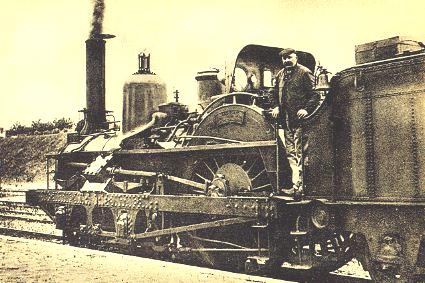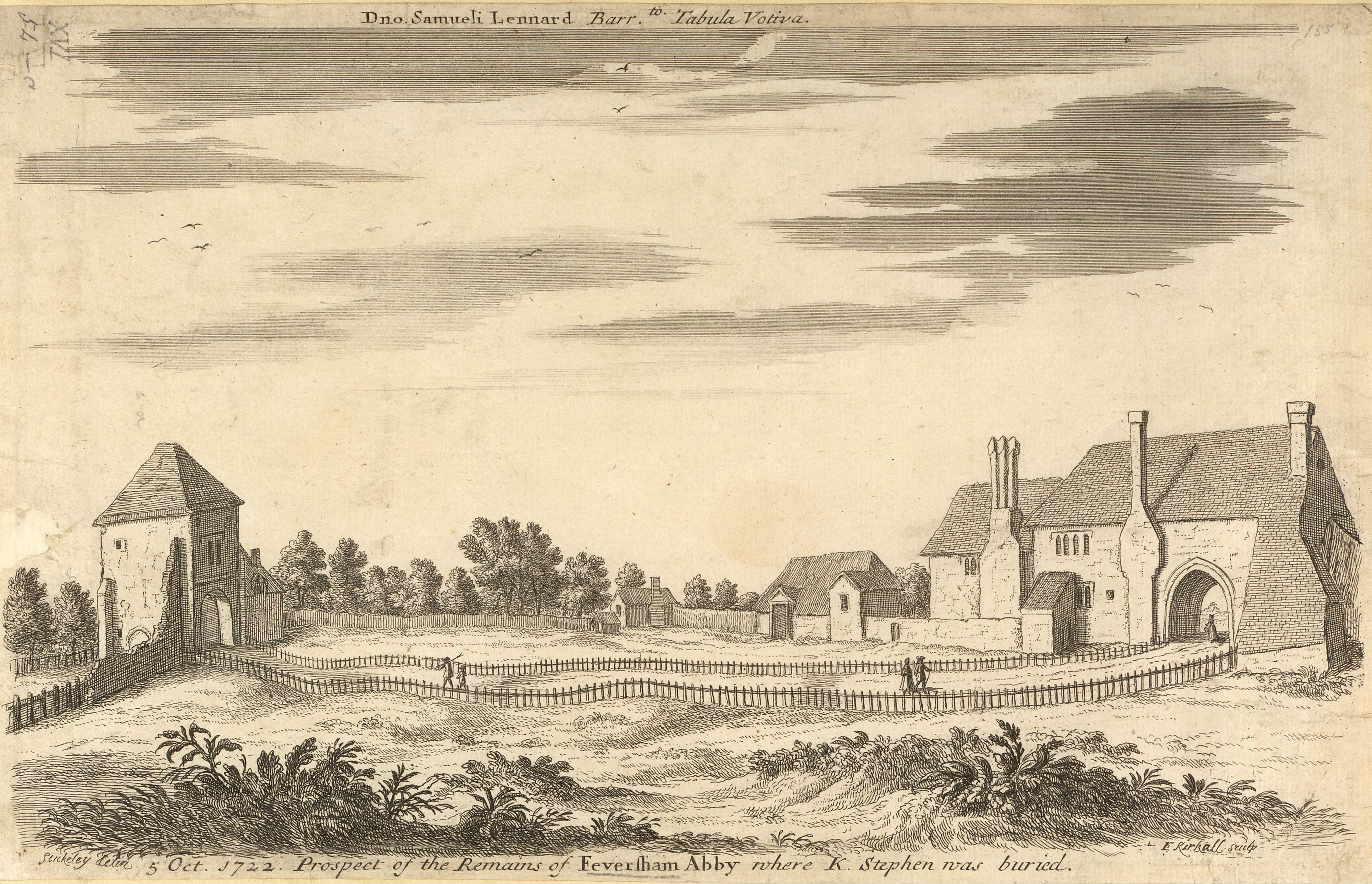|
LCDR Second Sondes Class
The LCDR Second ''Sondes'' class was a class of six steam locomotives. They were designed by William Martley for the London, Chatham and Dover Railway (LCDR), and built at the LCDR's Longhedge works during 1865, using components from the ''Sondes'' class 4-4-0ST locomotives, including the boilers. In November 1875, William Kirtley (who had replaced Martley following the latter's death in 1874) allotted the class letter F. During 1876–78, the locomotives were rebuilt with new boilers and cylinders; at the same time they were given numbers, the names being removed. They passed to the South Eastern and Chatham Railway The South Eastern and Chatham Railway Companies Joint Management Committee (SE&CRCJMC),Awdry (1990), page 199 known as the South Eastern and Chatham Railway (SE&CR), was a working union of two neighbouring rival railways, the South Easter ... (SECR) at the start of 1899, and their numbers were increased by 459 to avoid duplication with former South E ... [...More Info...] [...Related Items...] OR: [Wikipedia] [Google] [Baidu] |
William Martley
William Martley (4 January 1824 – 6 February 1874) was the locomotive superintendent of the London Chatham and Dover Railway (LCDR) in England from 1860 until his death. Biography William was born in Ballyfallon, in County Meath, Ireland, in 1824. In 1841 he was articled to Daniel Gooch at the Swindon Works of the Great Western Railway, and in 1847 became locomotive superintendent of the Waterford, Limerick and Western Railway. He soon moved to the South Devon Railway, and then, in 1850, became locomotive superintendent of the South Wales Railway, based at Newport. In 1860 he moved to the London Chatham and Dover Railway, where he was the first locomotive superintendent. He became a member of the Institution of Civil Engineers in 1867, but died in office in February 1874. London Chatham & Dover Railway During his period at the LCDR Martley established the Longhedge Railway Works (Battersea) 1860–1862 and used it for the construction of new locomotives, and the Stewar ... [...More Info...] [...Related Items...] OR: [Wikipedia] [Google] [Baidu] |
George Milles, 4th Baron Sondes
George John Milles, 4th Baron Sondes (20 January 1794 – 17 December 1874), styled Hon. George Watson until 1820 and Hon. George Milles from 1820 to 1836, was an English peer. George was the second son of Lewis Watson, 2nd Baron Sondes, and his wife Mary Milles. On 17 October 1811, he matriculated at Christ Church, Oxford. He purchased a cornetcy in the Royal Horse Guards on 15 December 1812. He purchased a lieutenancy on 24 March 1814, and fought at the Battle of Waterloo. He retired from the army in May 1816. George changed his surname to Milles, that of his mother's family, on 27 December 1820, in accordance with the will of his grandfather Richard Milles. He inherited Milles' estate at North Elmham in Norfolk. He married Eleanor Knatchbull, 5th daughter of Sir Edward Knatchbull, 8th Baronet. He was commissioned a captain in the 2nd Regiment of Norfolk Yeomanry Cavalry on 27 June 1826. In 1830, he served as High Sheriff of Norfolk. On 31 March 1831, he was promoted to major ... [...More Info...] [...Related Items...] OR: [Wikipedia] [Google] [Baidu] |
Railway Locomotives Introduced In 1865
Rail transport (also known as train transport) is a means of transport that transfers passengers and goods on wheeled vehicles running on rails, which are incorporated in tracks. In contrast to road transport, where the vehicles run on a prepared flat surface, rail vehicles (rolling stock) are directionally guided by the tracks on which they run. Tracks usually consist of steel rails, installed on sleepers (ties) set in ballast, on which the rolling stock, usually fitted with metal wheels, moves. Other variations are also possible, such as "slab track", in which the rails are fastened to a concrete foundation resting on a prepared subsurface. Rolling stock in a rail transport system generally encounters lower frictional resistance than rubber-tyred road vehicles, so passenger and freight cars (carriages and wagons) can be coupled into longer trains. The operation is carried out by a railway company, providing transport between train stations or freight customer facilit ... [...More Info...] [...Related Items...] OR: [Wikipedia] [Google] [Baidu] |
Railway Correspondence And Travel Society
The Railway Correspondence and Travel Society (RCTS) is a national society founded in Cheltenham, England in 1928 to bring together those interested in rail transport and locomotives. Since 1929 the Society has published a regular journal ''The Railway Observer'' which records the current railway scene. It also has regional branches which organise meetings and trips to places of interest and an archive & library. It has published definitive multi-volume locomotive histories of the Great Western, Southern and London & North Eastern Railways, and has in progress similar works on the London, Midland & Scottish Railway and British Railways standard steam locomotives. It also has published many other historical railway books since the mid-1950s. On 2 November 2016, the RCTS become a Charitable Incorporated Organisation (CIO), registered number 1169995. Its new Archive and Library (located within the former station-master's house at Leatherhead station) was opened on 6 Octobe ... [...More Info...] [...Related Items...] OR: [Wikipedia] [Google] [Baidu] |
Thomas Russell Crampton
Thomas Russell Crampton, MICE, MIMechE (6 August 1816 – 19 April 1888) was an English engineer born at Broadstairs, Kent, and trained on Brunel's Great Western Railway. He is best known for designing the Crampton locomotive but had many engineering interests including the electric telegraph and the Channel Tunnel for which he designed a boring machine. His locomotives had much better success in France, Germany and Italy than they did in the UK. Personal life Born to John and Mary Crampton of Prospect Cottage (in what is now Dickens Walk), Broadstairs, on 6 August 1816, Crampton was the son of a plumber and architect. He was educated privately. Crampton married Louisa Martha Hall, who was a singer and a friend of Jenny Lind, on 25 February 1841. They had 8 children, six boys and two girls. The eldest girl, Ada Sarah, died aged 4 on 16 February 1857. and Crampton gifted a stained glass window in St. Peter's church, Broadstairs in her memory. Their youngest daughter, Louisa, wa ... [...More Info...] [...Related Items...] OR: [Wikipedia] [Google] [Baidu] |
Faversham
Faversham is a market town in Kent, England, from London and from Canterbury, next to the Swale, a strip of sea separating mainland Kent from the Isle of Sheppey in the Thames Estuary. It is close to the A2 road (Great Britain), A2, which follows an ancient British trackway which was used by the Romans and the Anglo-Saxons, and known as Watling Street. The name is of Old English origin, meaning "the metal-worker's village". There has been a settlement at Faversham since pre-Roman times, next to the ancient sea port on Faversham Creek. It was inhabited by the Saxons and mentioned in the Domesday Book of 1086 as ''Favreshant''. The town was favoured by Stephen of England, King Stephen who established Faversham Abbey, which survived until the Dissolution of the Monasteries in 1538. Subsequently, the town became an important seaport and established itself as a centre for brewing, and the Shepherd Neame Brewery, founded in 1698, remains a significant major employer. The town was al ... [...More Info...] [...Related Items...] OR: [Wikipedia] [Google] [Baidu] |
Sittingbourne
Sittingbourne is an industrial town in Kent, south-east England, from Canterbury and from London, beside the Roman Watling Street, an ancient British trackway used by the Romans and the Anglo-Saxons and next to the Swale, a strip of sea separating mainland Kent from the Isle of Sheppey. The town became prominent after the death of Thomas Becket in 1170, since it provided a convenient resting point on the road from London to Canterbury and Dover. Chatham Main Line links to London Victoria and HS1 to St Pancras International, the journey taking about an hour from Sittingbourne railway station. History Sittingbourne owes its name to a modernised version of an observation on its location. The town's name came from the fact that there is a small stream or "bourne" running underground in part of the town. Hasted writing in the 1790s in his ''History of Kent'' states that: The Kent Hundred Rolls of 1274–5, preserved in the National Archives, record Sittingbourne as Sydingeb ... [...More Info...] [...Related Items...] OR: [Wikipedia] [Google] [Baidu] |
Longhedge Railway Works (Battersea)
Longhedge Railway Works was a locomotive and carriage works built by the London, Chatham and Dover Railway in the borough of Battersea, South London to serve their new London terminus at Victoria. The facility existed between 1862 until the mid-1950s. History Construction In 1860 the directors of the London, Chatham and Dover Railway decided to purchase of land, formerly part of the Long Hedge farm in Battersea, to establish their new locomotive works and motive power depot. The site was on the south side of the London and South Western Railway main line at Stewarts Lane. By February 1862 an erecting shop for twelve locomotives, and a running shed for 26 locomotives had been completed, and by the end of the year a carriage works was also completed on the site. Further extensions were made in 1875/6 and 1880/1. Activities The new works was initially used by the locomotive superintendent William Martley for the repair and rebuilding of the existing locomotive stock, with new loc ... [...More Info...] [...Related Items...] OR: [Wikipedia] [Google] [Baidu] |
Chatham, Kent
Chatham ( ) is a town located within the Medway unitary authority in the ceremonial county of Kent, England. The town forms a conurbation with neighbouring towns Gillingham, Rochester, Strood and Rainham. The town developed around Chatham Dockyard and several Army barracks, together with 19th-century forts which provided a defensive shield for the dockyard. The Corps of Royal Engineers is still based in Chatham at Brompton Barracks. The Dockyard closed in 1984, but the remaining major naval buildings are an attraction for a flourishing tourist industry. Following closure, part of the site was developed as a commercial port, other parts were redeveloped for business and residential use, and part was used as the Chatham Historic Dockyard museum. Its attractions include the submarine . The town has important road links and the railway and bus stations are the main interchanges for the area. It is the administrative headquarters of Medway unitary authority, as well as its ... [...More Info...] [...Related Items...] OR: [Wikipedia] [Google] [Baidu] |
South Eastern Railway, UK
The South Eastern Railway (SER) was a railway company in south-eastern England from 1836 until 1922. The company was formed to construct a route from London to Dover. Branch lines were later opened to Tunbridge Wells, Hastings, Canterbury and other places in Kent. The SER absorbed or leased other railways, some older than itself, including the London and Greenwich Railway and the Canterbury and Whitstable Railway. Most of the company's routes were in Kent, eastern Sussex and the London suburbs, with a long cross-country route from in Surrey to Reading, Berkshire. Much of the company's early history saw attempts at expansion and feuding with its neighbours; the London Brighton and South Coast Railway (LBSCR) in the west and the London, Chatham and Dover Railway (LCDR) to the north-east. However, in 1899 the SER agreed with the LCDR to share operation of the two railways, work them as a single system (marketed as the South Eastern and Chatham Railway) and pool receipts: bu ... [...More Info...] [...Related Items...] OR: [Wikipedia] [Google] [Baidu] |


